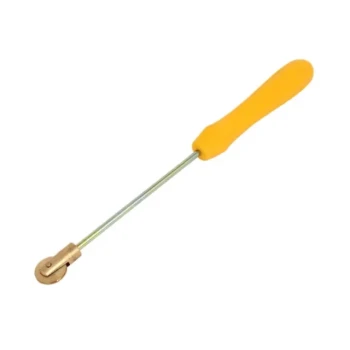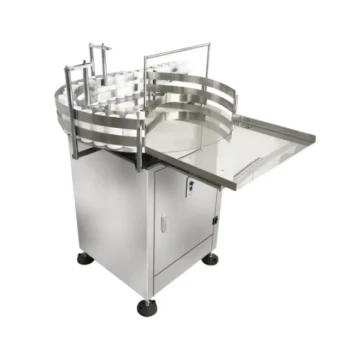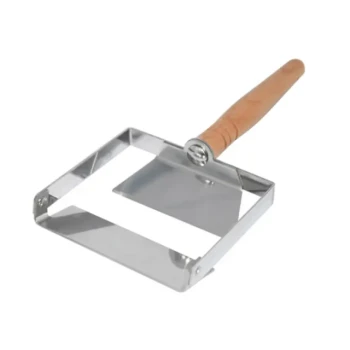For a beekeeper, the most common and effective food to provide for honeybees is a simple sugar water solution. This mixture typically consists of a 1:1 ratio of pure white sugar to water by weight or volume, especially for stimulating a new colony. A heavier 2:1 ratio of sugar to water is often used for late-season feeding to help bees build up their winter stores.
The crucial takeaway is that feeding honeybees is a strategic intervention for beekeepers, not a casual activity. It is done for specific reasons—like preventing starvation or helping a new colony establish itself—and should be avoided when natural nectar sources are abundant.
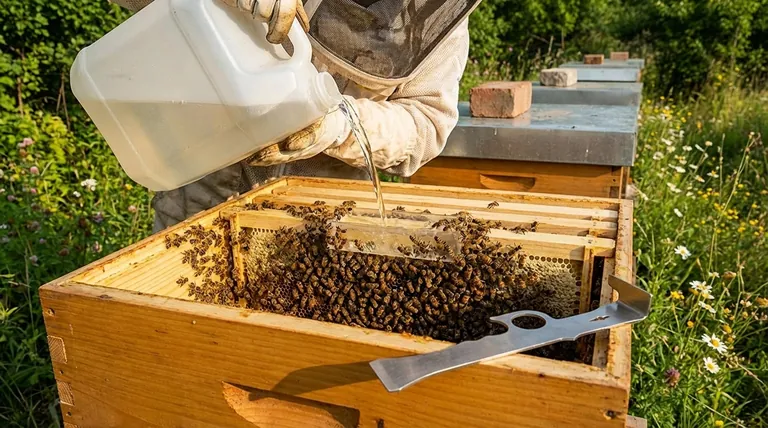
The Core Purpose of Feeding Bees: Strategic Intervention
Feeding a honeybee colony is a deliberate management decision. It supplements their natural foraging efforts during times of need, ensuring the colony's health and survival.
Preventing Starvation
The most critical reason to feed bees is to prevent them from starving. This is most common in late winter and early spring when the colony's honey stores may be depleted before natural flowers have begun to produce nectar.
Supporting New Colonies
Newly installed bee packages or swarms have a monumental task: building an entire hive's worth of wax comb. Providing a 1:1 sugar water solution gives them a ready source of carbohydrates, fueling the wax production necessary to build their home and for the queen to begin laying eggs.
What to Use: The Right Kind of Sugar
The best choice is plain white cane or beet sugar. Laboratory analysis shows no difference in the effects of these sugars on bees.
Avoid using brown sugar, molasses, or any sugar with impurities, as these can cause dysentery in bees. Never feed bees honey from an unknown source, as it can contain spores of diseases like American Foulbrood that can devastate your colony.
Understanding the Methods: Common Feeder Types
How you deliver the sugar water is just as important as what you feed. Different feeders serve different purposes and have unique benefits.
In-Hive Feeders
These feeders, such as frame feeders or top feeders, are placed inside the hive. This protects the sugar water from robber bees from other colonies and reduces the chance of attracting pests like ants or wasps.
Entrance Feeders
These small feeders are placed at the entrance of the hive. While they make it easy to see how much food the bees are consuming, they are highly susceptible to being robbed by other insects, which can create a dangerous situation for a weak colony.
Critical Trade-offs: When Feeding Can Be Harmful
While essential at times, feeding bees at the wrong time or in the wrong way can cause significant problems for the hive.
Attracting Pests and Robbers
The smell of sugar water is a powerful attractant. Spilled syrup or exposed feeders can incite "robbing," where stronger colonies attack and steal the resources of a weaker one, often leading to the collapse of the weaker hive.
Diluting the Honey Supply
If you feed sugar water while bees are collecting nectar to make honey, they will store that sugar water in the honeycomb. This contaminates the final product, meaning you can no longer call it pure honey.
Creating Dependency
Constant, unnecessary feeding can discourage bees from foraging naturally. It's crucial to allow the colony to be self-sufficient whenever natural resources are available.
How to Decide if Your Colony Needs Food
Your decision to feed should always be based on the colony's specific needs and the current environmental conditions.
- If you are establishing a new colony: Feed a 1:1 sugar water solution consistently until the bees have built out the comb in their primary brood boxes.
- If you are in a nectar dearth or drought: Check the hive's weight and food stores; provide supplemental feeding if they seem light and there are no natural food sources.
- If you are approaching late winter/early spring: Monitor the colony's honey stores carefully and feed a 2:1 syrup only if they are at risk of running out of food before the first flowers bloom.
- If there is a strong natural nectar flow: Stop all feeding immediately to allow the bees to collect natural nectar and produce pure, high-quality honey.
Ultimately, responsible feeding is about providing support only when necessary, allowing your bees to thrive naturally.
Summary Table:
| Feeding Scenario | Recommended Food | Key Purpose |
|---|---|---|
| New Colony / Spring Stimulus | 1:1 Sugar Water (by weight/volume) | Fuel wax production and brood rearing |
| Late Season / Winter Prep | 2:1 Sugar Water (by weight/volume) | Help build up winter honey stores |
| Critical Rule | Always use plain white sugar | Avoid impurities that cause dysentery |
Equip Your Apiary for Success with HONESTBEE
Strategic feeding is just one part of effective hive management. Ensure your beekeeping operation has the reliable, high-quality supplies it needs to thrive.
HONESTBEE supplies commercial apiaries and beekeeping equipment distributors with the essential tools for success, including durable feeders, hive components, and protective gear, all through our wholesale-focused operations.
Let's discuss your needs. Contact our team today to learn how our products can support the health of your colonies and the productivity of your business.
Visual Guide
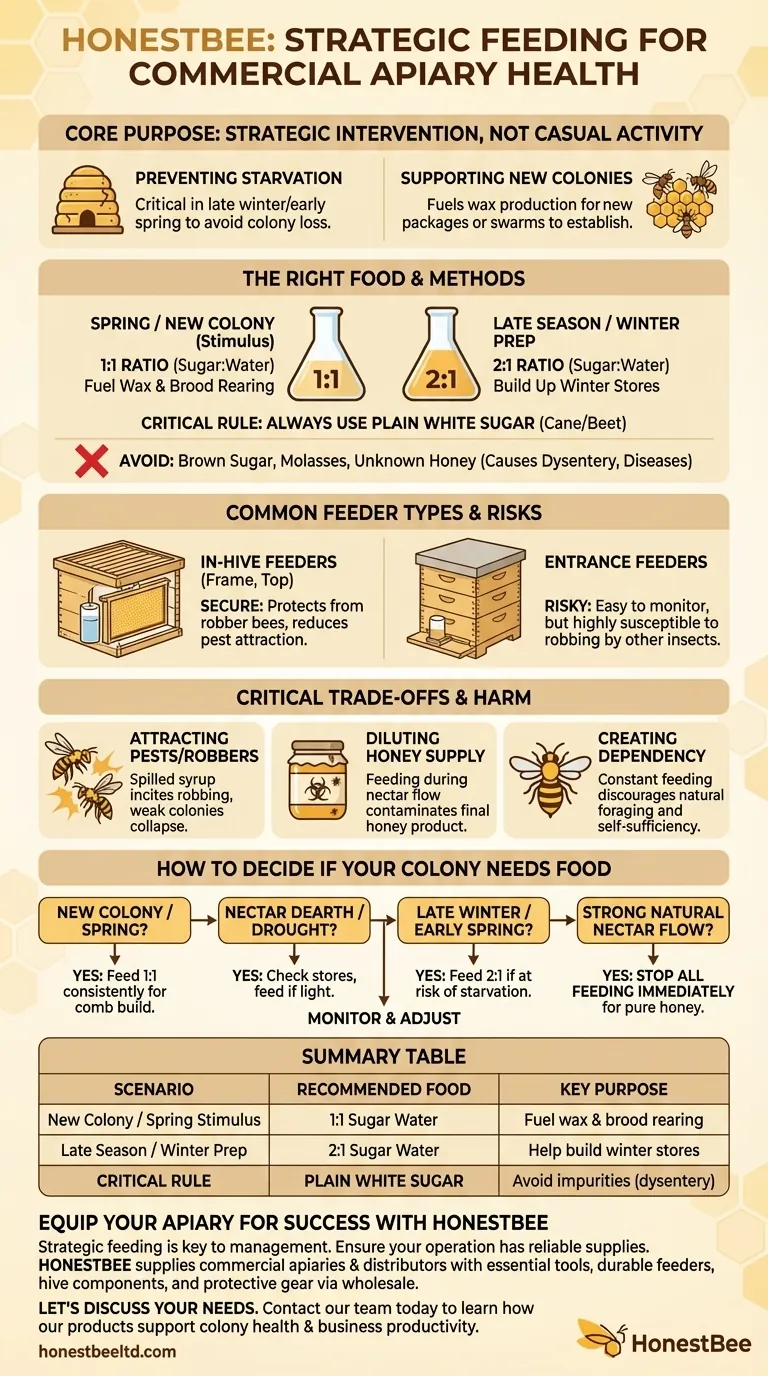
Related Products
- HONESTBEE Advanced Ergonomic Stainless Steel Hive Tool for Beekeeping
- Professional Dual-End Stainless Steel Hive Tool for Beekeeping
- Professional 3-Bar Frame Grip with Integrated Hive Tool
- No Grafting Queen Rearing Kit: System for Royal Jelly Production and Queen Rearing
- Beehive Handle and Frame Rest Cutting Machine: Your Specialized Hive Machine
People Also Ask
- What is a hive tool and what are its uses? Master Your Hive Inspections with the Essential Beekeeper's Tool
- Why is it important to compare the progress of different hives? A Beekeeper's Key Diagnostic Tool
- What are some common uses of a hive tool? Essential Multi-Purpose Tool for Every Beekeeper
- How should beekeepers handle bees when using a hive tool? Master Calm, Deliberate Techniques
- How is a hive tool used for scraping and cleaning? Master Hive Maintenance for a Healthy Colony








